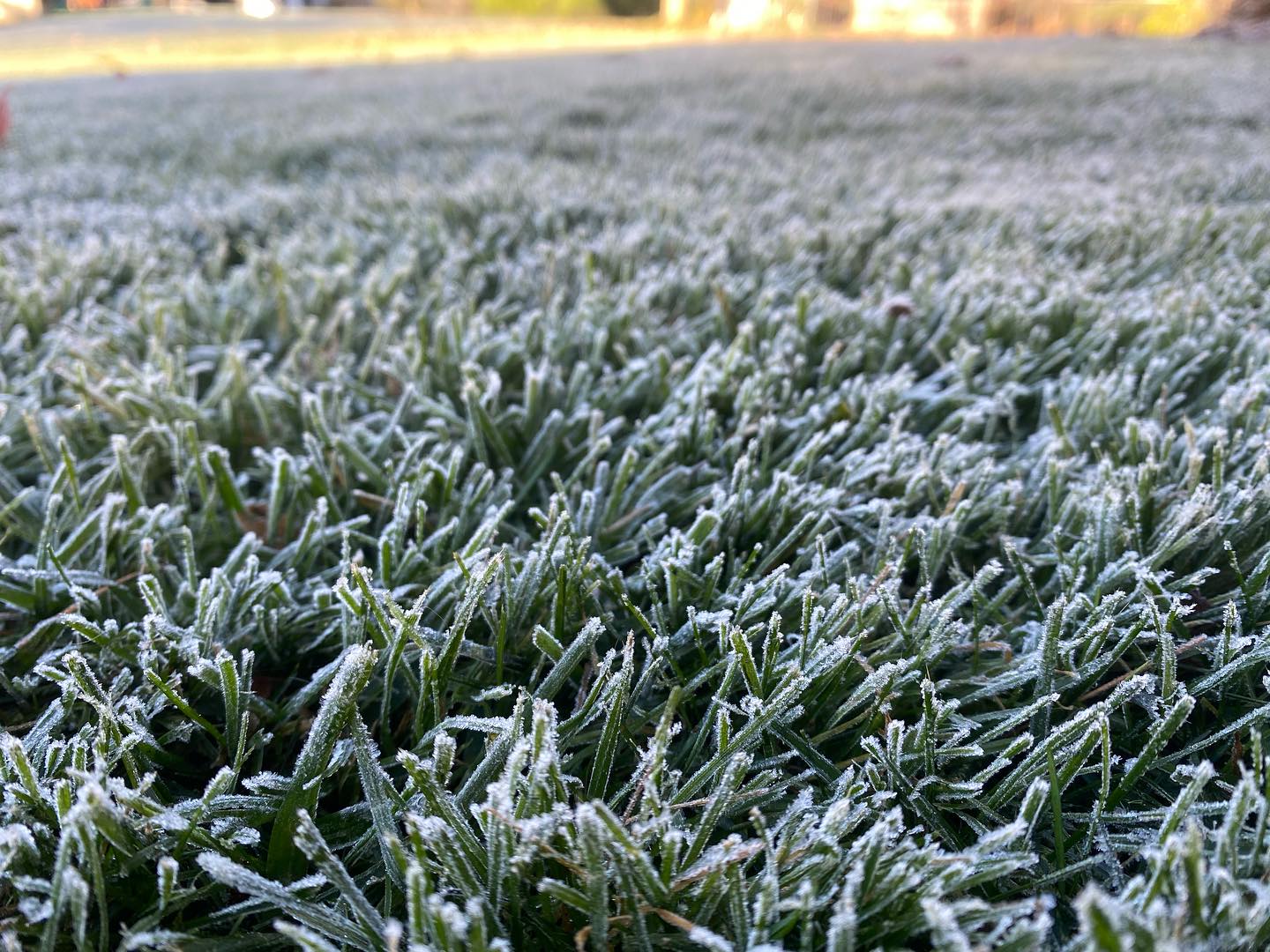By the time harvest season arrives, some property owners begin to wonder, “when does grass stop growing?” Temperature impacts grass growth, so once the weather becomes cool enough, you can put your lawn mower away for the season. Grass generally enters a long period of dormancy during late fall or early winter, depending on what part of the country you happen to be in. Consistent cold weather means grass stops growing during the cold season and won’t begin to grow again until the following spring when warm weather returns.
What Temperature Does Grass Stop Growing?
Grass stops growing when air temperatures consistently drop below about 50 degrees Fahrenheit. Soil temperatures cool, triggering grass to stop growing. Usually, grass growth stops by late October or early November. Still, winter dormancy might not occur until December in some areas of the country because colder temperatures don’t occur till then. A single temperature drop might not be enough to cool the soil temperature. However, once colder weather settles in, soil temperatures will fall and grass will stop growing.
When Do Cool Season Grasses Stop Growing?
Cool-season grasses stop growing once temperatures drop below 32 degrees Fahrenheit. Grass blades slow down as temperatures dip below 50 degrees but tend to stop as temperatures freeze. The first frosts can also dramatically slow down growth for all landscape plants, including grass. Freezing temperatures tend to occur in late October and early November, leaving grass growth to enter its period of winter dormancy.
When Do Warm Season Grasses Stop Growing?
Warm-season grasses stop growing when air temperatures consistently drop below 65 degrees Fahrenheit. Warm-season grasses like Bermuda grass tend to turn brown about this time, too. Of course, warm-season grass thrives during the hot weather of the summer season. Once grass stops growing, mowing will not be necessary until early or late spring when air temperatures begin to rise and foster grass growth again.
How Does Temperature Affect Grass Growth?
When temperatures drop, grass will begin to grow more slowly. During winter months, soil temperatures are too cool to support grass growth. Seasonal grass growth patterns impact both cool-season grasses and warm-season grasses. Warm-season grass is more vulnerable to colder temperatures, so it stops growing during the early days of the cool season. Cool-season grasses can tolerate colder temperatures until freezing occurs. At that point, expect to stop cutting grass by late fall or early winter.
When to Stop Lawn Mowing
Lawn mowing is impacted by weather and daytime temperatures. You can stop lawn mowing when grass stops growing, usually in late fall. You won’t have to worry about cutting grass again in the winter months until spring. You should plan to mow during the fall until the grass stops growing for the winter season. You don’t want to leave grass long for dormancy or you can invite snow mold.
When Does Grass Stop Growing FAQs
Is It Better to Leave Your Lawn Long or Short for Winter?
It is best to leave your grass shorter for the winter. Otherwise, long grass might develop snow mold, an unwelcome fungus that can harm a healthy lawn. However, final mowing should not leave grass too short, or freezing can damage it. Ideally, you should never remove more than a third of your grass blades’ growth, or you can leave grass vulnerable to frost.
What Month Does Grass Grow Slower?
Grass usually begins to grow more slowly by late October or early November. When temperatures drop below 50 or 55 degrees Fahrenheit consistently, grass growth starts to slow considerably.
How Do You Know When Grass Stops Growing?
Property owners will notice that their grass doesn’t need to be mowed as often as growth slows. Warm-season grasses often begin to turn brown when they stop growing. Coool-season grasses won’t need to be mowed once temperatures are near freezing.
Does Grass Grow Slower in Fall?
Yes, grass grows more slowly in fall once air temperatures reach 50 degrees on a regular basis. Property owners can mow less frequently. They’ll notice that mowing is no longer necessary as temperatures dip closer to freezing by late fall or early winter.
At What Temperature Does Grass Go Dormant?
Warm season grass begins to go dormant when air temperatures fall below 65 degrees on a regular basis. Cool season grasses start growing more slowly when temperature drop under 50 degrees; these grasses will stop growing as colder temperatures move in, and temperatures near the freezing point.
At What Temperature Should You Not Cut Your Grass?
When weather temperatures near 32 degrees, property owners should stop cutting grass. Once temperatures cool, you can alter your mowing plan, mowing less frequently. You’ll notice that the grass has stopped growing by late fall or early winter.
Will Grass Grow in 40-degree Weather?
Coool-season grasses will continue to grow during 40-degree weather, but more slowly than during the warm season. Grass growth will slow, however, once temperatures reason 50 degrees consistently. As air temperatures fall toward the freezing point, grass growth will eventually stop. At this point, you can stop mowing your lawn.

